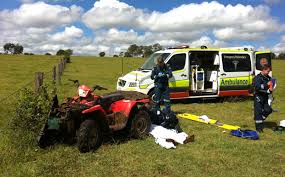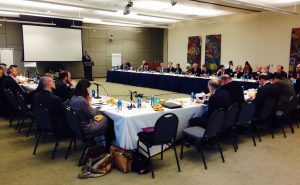Debate was 20 March 2017
The full transcript is at: http://bit.ly/2nNcnk9 (go to ‘Bills’ at two places down the right-hand side) Extracts begin:
Extracts begin:
Tony Zappia, Member for Makin, Shadow Minister for Medicare:
“It is seen by Labor as a step in the right direction in bridging the health divide between urban and outback Australia. So Labor will be supporting this legislation. However, we believe that the legislation falls well short of what was hoped for. I particularly note that the Commissioner’s appointment is for a two-year period. The Commissioner’s position will be abolished in just three years’ time, in July 2020. The Commissioner will have to rely on negotiations with the Health Department for any staff requirements. It could also be a part-time position. Furthermore, there is a very strong emphasis on the position being primarily to establish a national rural generalist pathway, as important as that is.”
– – “This government is failing rural health students, having cut $72.5 million from health workforce scholarships.” – – “The Health Workforce Scholarship Program, which amalgamates six scholarships into one program, was to be ready for the 2017 academic year but has now been again delayed. Those delays are already causing problems for students. For example, the interim funding arrangements for the Nursing and Allied Health Scholarship and Support Scheme have left a cohort of students beginning their studies in 2017 with funding uncertainty for future years.”
– – “It would seem to me that by the time the Commissioner is appointed and proceeds with the establishment of the national rural generalist pathway there may not be a great deal of time or scope for the Commissioner to do much else beyond that.”
Ted O’Brien, Member for Fairfax:
– -“The government has committed $4.4 million to create and support the Commissioner, who will provide frank and fearless advice and have the ability to influence the future of our country’s rural healthcare policy.”
– -“I am delighted, therefore, that the National Rural Health Commissioner will be taking responsibility for rural workforce issues. Innovative and sustainable medical practice solutions are exactly what is needed for smaller, harder to reach regional towns. Critical to this is the development of a national rural generalist pathway—a core step towards strengthening the rural medical workforce. A rural generalist pathway is not a new concept. There are varying degrees of support and infrastructure available at a state level, but what is not currently available is a coordinated national approach, and this is the gap that will be filled by this legislation.”
– -“Not only is the Sunshine Coast the healthiest place on Earth and the lifestyle capital of Australia but also, like all regional and rural areas, we benefit enormously from a supportive community, high rates of volunteerism and more social capital than our city cousins.”
Steve Georganas, Hindmarsh:
– -“I suppose it is the nature of Australia, with its scattered rural and remote populations, that providing essential services to these communities is costly. But it is also absolutely necessary, regardless of the cost. It highlights the dangers of privatising certain aspects of these essential services. This is why we must be vigilant.”
– -“The government had the opportunity to establish a Commissioner’s office with real political support and clout, which could put rural and remote health on the agenda, bringing those levels back up to the level of what we have in the cities, or close to it.”
Damian Drum, Murray:
“It was great that we had a situation where someone with an extensive knowledge of the health industry—a gastroenterologist—was able to talk on issues surrounding rural health, and that someone who has spent an enormous amount of time in the rural health sector as a professional is able to then adjudicate over the introduction of this Commissioner.”
Warren Snowdon, Lingiari:
– -“Aboriginal people in my electorate have the worst health outcomes of any people in Australia, yet they are very concerned about the nature of health services that get delivered to them. I would have thought that the job of this new person, this position, should be expanded well beyond the scope of what is currently being envisaged and should talk about the panoply of issues that confront the health workforce, for example—not only in employing more doctors, but we know that we have an emerging health crisis in this country around the shortage of nurses. That will impact upon the bush. We know that in all areas of allied health care there are shortages of workers, particularly in the bush. We know there are shortages of Aboriginal health workers in the bush, and we know that government—any government—is yet to really embrace the idea of physician assistants and giving them a role in the bush.”

David Littleproud, Maranoa
“I think it is also important to recognise that this Bill is about actually getting back to having the grassroots drive the outcomes, and not having Canberra go out there and tell the people of rural and regional Australia exactly what they should have. This is about letting the community drive the outcomes and putting in place an environment where a Commissioner can connect with the local community to be able to drive the outcomes that they are looking for—not what Canberra is looking for.”
Brian Mitchell, Lyons
“There are 1,560 allied health professionals across Tasmania. Our training sector to boost and strengthen this cohort has been negatively impacted by the stripping back of TAFE training services and the deregulating of university courses. All the loops in the chain of health care in Tasmania are cracking and breaking. We welcome this initiative today, but it is not enough.”
George Christensen, Dawson
“Unfortunately, most of the Australian population is based in capital cities and most people are very insulated from what might happen outside those capital city limits. Again, unfortunately, most of the representatives in this place also live in, and represent people from, those capital cities. That is why it takes a strong voice from those rural and regional communities to ensure their needs are not forgotten or swept under the carpet.”
– – “Rural, regional and remote Australia is the heart and soul of this country, providing so much in productivity and economic benefit, of which few people in the city are aware. Regional and rural communities put food on the table; they put clothes on our back. And yet a national survey in 2012 found that three-quarters of year 6 students thought cotton socks came from animals and a quarter of students thought yoghurt grew on trees.
Remote communities provide the nation’s wealth through mining and exports, and yet activists in the cities want to shut down the very industries that provide jobs and the taxes they want the government to spend. There is a disconnect between cities and the real world. It is almost as if out of sight is out of mind. We cannot allow the health of our rural Australians to be left out of sight and out of mind. When the regions are so important to the health of the nation and the health of our economy, the very least we can do is to ensure the health of those living in the rural, regional and remote communities is good enough for them to continue to live there and continue to do the hard work for this country.
Rebekha Sharkie, Mayo
– – “In December 2015 the Regional Australia Institute released figures showing that collectively Australia’s regions account for approximately one-third of our total economic output. Their report said: “were it not for the regions, Australia’s economy today would only be the size that it was in 1997 and Australia would no longer rank amongst the world’s largest economies”. We are prosperous nation because of regional Australia. And yet, despite this stunning fact and the fact that one third of our country’s population lives outside of the major cities, the regions are being left behind on a wide range of issues when it comes to policy development. Nowhere is this felt more than in health.”

– – “there is a constant battle getting new (medical) graduates to move out to regional areas. The latest data from the Medical Schools Outcomes Database survey reported that 76 per cent of domestic graduates are living in capital cities. If you expand the definition to include a major urban area, that figure increases to 84 per cent. Eighty-four per cent of Australian graduates live in a capital city or a major urban area, while a third of Australians live in a regional or remote area. I believe that we need to put measures in place to entice medical students to look for jobs in regional and rural areas. I do not believe that we need more medical schools; rather, we need to take a strong, hard look at the schools in what they are doing to implement an outreach training into the regions. I believe that if we can encourage more young people from the country to pursue a career in medicine, it is more likely that they will want to return home to their community to practice. The current minimum intake is 25 per cent of students from a rural background. That is a good start, but I support the Australian Medical Association’s stance on lifting the benchmark to at least 30 per cent of all students.
It is more than offering a place to a young person; it is also about connecting them to rural health from the beginning of their degree. It is about connecting them with rural health practitioners from the beginning of their degree so that potential doctors can build relationships and create opportunities in regional Australia and can see where their career could take them. Currently just 25 per cent of medical students are required to undertake at least one year of clinical training in a rural area. I would like to see a more ambitious stance to be taken, that every Australian medical student be required to undertake a clinical placement in a regional or rural area.”
Cathy McGowan, Indi:
– – “while doctors are really important, they are only one part of what is a system. For many, many people, their place of health and health care is not the doctor; it might be their home—it is the parents, it is the mother looking after the kids, teaching the children about hygiene and how to have exercise and how to be safe. For me, the home—along with the parents—is a fundamental place for health care. And once we have the home looked after and we have educated our families and our parents well, the next circle of influence around health is our schools. I am really pleased that the Victorian government is doing some fantastic work on trialling doctors in schools and working in that context—a great approach.
And the next circle out from our schools is our communities. In country areas, it is not only community health that is important; the other community workers play a really important part. Aged-care workers, childcare workers, local government workers and health inspectors—what an important role they play in our health.”
– – “So while I welcome the support for GPs it makes me really sad that we have missed the opportunity to do so much more. I acknowledge that this was an election commitment—and it is important that we fulfil election commitments—but I really do feel that it lacks ambition.”
– – “But this system approach that I have been talking about works well because we have a dedicated internet service. Ideally, we would have access to quality internet services everywhere in Australia, particularly in rural Australia. Sadly, that is not the case—and I am not even hopeful that the NBN service will deliver the expertise we need. But if we do get it, it will absolutely revolutionise the ability of our hospitals, our GPs and our medical professionals to provide services to people back into the other parts of the system—the homes, schools, workplaces and other areas where health and healing are practised.”
– – “Multipurpose services are no longer popular. It is such a pity. In our rural communities they provide health and aged care, and they employ doctors. In Corryong, they employ doctors to come and do the health and community work that we need doing. The model of funding has not changed in years, and we absolutely need to review that multipurpose service funding and reintroduce a 21st century approach, because hospitals like Corryong provide such a service in my community and, if we cannot get the funding right and they close, we will have no doctors there, because the only doctors in Corryong are the multipurpose employed ones. So, if we do not have the MPS providing the service, that whole community will be bereft.
In a similar way, I would like to acknowledge Alpine Health. Alpine Health is another MPS, and it works in Mount Beauty, Bright and Myrtleford. That MPS is particularly noteworthy, because of the health promotion work that it does. It provides that extension to the community, families, workplaces and community health and does such a good job in actually keeping people out of hospitals and out of our GP services through its health promotion.”
“One of the things that I am really disappointed about in this legislation is that we do not talk about health promotion. We have not talked about how stopping people getting ill is a really important part of the whole role.”
– -“One of the things the Minister said in his second reading speech was that this was going to be an independent position. Sadly, I do not accept that, if you put a person working in a Health Department, they will be independent. I do not see how that is going to happen.”
– -“At the moment, as the legislation stands, this position does not report to Parliament – – The legislation says that the Commissioner has to report every year on what they are doing, but the final report goes to the Minister. It is my belief that the final report should come to Parliament.
Editor’s note: Cathy McGowan’s amendment to require the Minister of the day to table the final report within five sitting days was agreed.

Rowan Ramsey, Grey
[He suspects that the establishment of the NRHC will make little difference.] “We should be seriously looking at postcode-specific Medicare provider numbers. – – I am not suggesting for one minute that we should tell doctors that they can or cannot set up practice anywhere in Australia; what I am saying is that we should tell them, ‘You can only deliver a service here if you want to access the public subsidy,’ which is the Medicare provider number. ‘If you want to charge full tote odds for your services, go ahead.’
– -“By and large, I find that rural doctors are very supportive of the proposals that I have put forward. Of course, there would be all kinds of give and take around the edges and, in particular, I think we would have to grandfather all the current doctors and say, ‘These rules will not apply to you,’ so that it will be a slow change to the system. But they actually understand the real challenges in getting doctors to come and work and practise in the country”
– – “over 50 per cent of the doctors in rural South Australia are overseas born and trained. We will stop importing those doctors almost imminently, because the pipeline coming out of the universities now is strong. In fact, we are probably training too many doctors for our future. There is a double-edged sword here. I believe we are heading for greater shortages in the country and we are heading back into over-servicing in the cities. It is not that hard for a doctor to over-service; you ask the patient to come back more often for a refill of a prescription or order a few more tests. We need to be aware of these looming issues before we get to them. If we neglect reform in this area now, in five or six years’ time, when we have chronic over-servicing in the cities, we do not have enough doctors in the country and we stop importing doctors from overseas, we will be in an almighty mess.”
Stephen Jones, Whitlam:
– – “I do not say it is a bad thing, but it falls a long way short of a great breakthrough.”
– – “there is a very stubborn link between health inequality and wealth inequality. When one goes up, the other goes up as well. The disease risk factors are higher in areas of lower income and lower wealth, and access to preventive health measures are lower as well. This flows through to life expectancy. In our capital cities, the median age at death is 82.2 years. In outer regional areas, that drops to 79.2 years and 73.2 years for people living in remote Australia. The relative risk of mortality between the poorest and the richest income quintiles translates to a life expectancy gap at age 20 years of six years. Diabetes, just one of the chronic diseases rampant in regional Australia, is 3.5 times more common in working-age Australians in the poorest areas as it is in the wealthiest areas. Of course, the majority of those poorest areas are in regional, rural and remote Australia”
– – “There are a lot of priorities that we need to focus on in rural and regional health care, and creating a new position or a new specialist called the GP rural specialist, as important as it might be, is not going to address all of those important healthcare issues.”

Dr David Gillespie, Lyne – Assistant Minister for Health
– -“I anticipate that the role will indeed achieve its broader objectives in helping to deliver all the critical outcomes about which many of us are in furious agreement as to the need for reform and better outcomes. I am hopeful that, in the future, further support can be obtained in both a budgetary and a legislative context.
– -“Several people have spoken up about the scope of work the Rural Health Commissioner will be asked to perform, and I would just reinforce – – that it will be the first and most pressing duty of the Rural Health Commissioner to address the issue of the medical workforce and coordinate with all the various stakeholders, which are numerous, in the development of a rural generalist pathway.
The Commissioner will provide advice in relation to rural health beyond that. There are very many other matters in which the Rural Health Commissioner will have to be involved, in policy development and championing causes: While the development of the pathways will be the Commissioner’s first priority, the needs of nursing, dental health, pharmacy, Indigenous health, mental health, midwifery, occupational therapy, physical therapy and other allied health stakeholders will also be considered.”
– -“we have already set up a rural stakeholder round table, which last met on 16 November 2016, and the idea that they would work with the Rural Health Commissioner has been established. There were 18 attendees at the last meeting, across all the stakeholder groups in the rural health space.”
– – “workforce distribution has been raised as a big issue, and within the Department I am establishing a distribution working group that will also work with the Health Commissioner, and there will be representatives from rural health stakeholders as well. The Commissioner would be a member of that distribution working group and could use the group to take advice on other of the Commissioner’s functions.”
end





